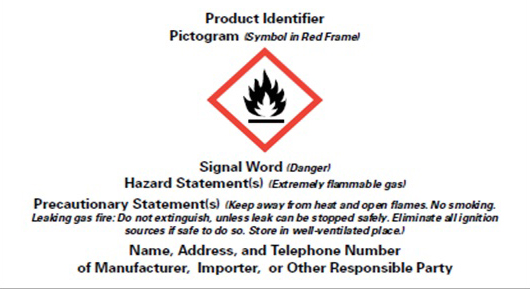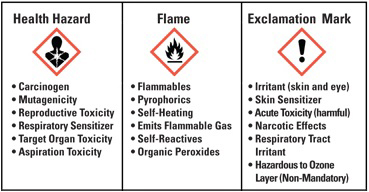The deadline for implementation for the new chemical safety program is June 1. Are you ready?
Electronics manufacturing companies are in the final phase of the Occupational Safety & Health Administration (OSHA) Global Harmonized System (GHS) standard.1,2 June 1, 2016 is the deadline for the new standard, which requires completed safety program updates, labeling and safety data sheet requirements.
The transition to compliance began three years ago with the original focus of the GHS regulation being to:
- Align with the Globally Harmonized System of Classification and Labeling of Chemicals, already adopted by 67 nations.
- Provide a common approach to classifying chemicals.
- Reduce confusion and increase understanding of chemical hazards.
- Improve safety and health of workers through more effective communication on chemical hazards.
This article discusses the final deployment steps needed for full implementation by an electronics manufacturing facility, and expands on the original focus and benefits to a company’s chemical introduction process, hazard identification, and emergency management and response program.
As of June 1, chemicals poured down or transferred to a secondary container will require the new label standard per FIGURE 1. Chemicals intended only for immediate use are exempt from the label requirement per the standard. The information on the example is extracted from the chemical safety data sheet and transferred to the secondary container (pour down) label. The GHS secondary container labels are specific to the chemical for providing communication and instructions of the hazards to the workplace.

Figure 1. GHS Label Example from OSHA.3
Companies that use chemicals within the facility should begin seeing the transition to the new safety data sheet (SDS) format. The new SDS format is required to be catalogued in place of the previous Material Safety Data Sheet (MSDS) revision. Per the regulation, safety data sheets must be available to all employees at any time, and no barrier should exist between the employee and retrieval of the SDS. A contingency plan must be in place if a power outage occurs and the company uses only an online retrieval system. If no contingency plan is in place, this may be considered a barrier per the hazard communication regulation. As such, some companies may choose to have an online system and hard copy logbook as a backup.
The final deployment requires updates to the facility’s safety program manual, including chemical introduction process. The safety program should include the new Hazard Communication Standard 29 CFR 1910.1200 (GHS standard) reference, and provide ongoing hazardous identification and communication awareness training to employees. Training must include an overview of labeling and safety data sheet terms, definitions and overall awareness to the hazard communication standard. A specific chemical hazard identification and communication method is required to review all new chemicals and deploy controls for employee safety and health. On occasion, chemicals may need to be revisited after introduction, as employee sensitivity is different for each chemical user. Employee sensitivity may include headaches, eye or nose irritation or other symptoms that occur only when using or in close proximity to a chemical.
Improved Health Benefits
Many benefits are anticipated through deployment of the new standard, the greatest being to improve the health and safety of workers through the standardization of hazard information of the safety data sheet and chemical labels. The new standard provides pictograms to raise awareness and communicate hazards to employees (FIGURE 2).

Figure 2. Sample Chemical Hazard descriptions from OSHA.4
The pictogram format provides the hazard identification during the chemical introduction process. The pictogram and overall new safety data sheet format provides the tools for a facility’s environmental health and safety team to accurately assess the hazards of any chemical and put controls in place to ensure employee safety.
Such controls to ensure employee safety may include personal protective equipment (PPE), which could consist of gloves, goggles and engineering controls such as fume hoods or increased facility ventilation. Flow down of these control requirements to the workforce is key; a recommendation is to conduct ongoing training and standardization through procedures and company work instructions. Another benefit is the enhancement to chemical handling guidelines, which provide guidance on safe handling and chemical storage practices. These guidelines are now located on the actual chemical container, providing quick access to employees for handling and storage.
Using the SDS
Section Three of the safety data sheet identifies the ingredients contained within the product, including substances, mixtures and chemicals identified.3 These listed chemicals must be reviewed to determine if first aid procedures, contingency plans or spill control kits need to be improved to respond to a chemical emergency. The spill control kit should have the material and tools needed for a chemical cleanup and be accessible where the spill may happen. It is recommended to perform spill drills for training awareness for the internal response team.
Emergency plans have many components to them to respond to an actual chemical emergency. Some key components include first aid measures, which must describe the initial care to be given to an employee exposed to a chemical before emergency first responders can arrive at the facility. It is recommended to invite first responders to your facility to review your emergency plan and chemical hazards in preparation for an actual chemical emergency.
The final countdown has begun to the June 1, 2016, deadline for GHS implementation. Many benefits have already been realized, with the overall goal of the GHS being to improve the safety and health of workers through more effective communication and identification of chemical hazards.
References
1. Scott Mazur, “GHS Timeline Update,” CIRCUITS ASSEMBLY, November 2014.
2. Scott Mazur, “GHS Impacts on the EMS,” CIRCUITS ASSEMBLY, November 2013.
3. OSHA.gov, Hazardous Communication - HazCom (Hazard Communication) standard 29 CFR 1910.1200.
4. OSHA.gov, Hazardous Communication - HazCom (Hazard Communication) standard 29 CFR 1910.1200.
Scott Mazur is environmental management representative and manufacturing staff engineer supporting the ISO 14001 and various environmental, chemical and hazardous waste programs for Benchmark Electronics New Hampshire Division (bench.com); This email address is being protected from spambots. You need JavaScript enabled to view it..














